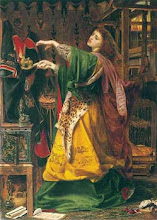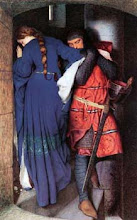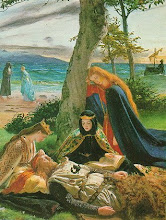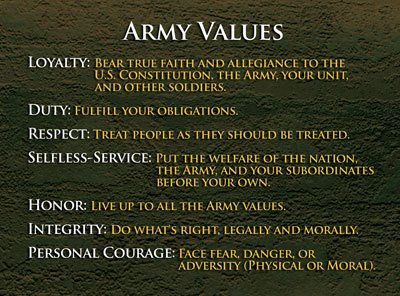by Edileide Brito
Boudicca (Boadicea) is one of Britain’s greatest heroines, a freedom fighter who rebelled against the Roman government. Her rebellion was the only viable challenge to the supremacy of the Romans who, until the fifth century, exercised a distinct influence over Britain and its heritage. Boudicca was queen of the Iceni people of Eastern England and led a major uprising against occupying Roman forces. Her husband Prasutagus, ruler of the Iceni people of East Anglia, when the Romans conquered southern England in AD 43, they allowed Prasutagus to continue to rule. However, when Prasutagus died the Romans decided to rule the Iceni directly and confiscated the property of the leading tribesmen. They are also said to have stripped and flogged Boudicca and raped her daughters. These actions exacerbated widespread resentment at Roman rule.
Around 60 or 61 AD, while the Roman governor Gaius Suetonius Paullinus was leading a campaign in North Wales, the Iceni rebelled. Members of other tribes joined them. Boudicca's warriors successfully defeated the Roman Ninth Legion and destroyed the capital of Roman Britain, then at Colchester. They went on to destroy London and Verulamium (St Albans). Thousands were killed. Finally, Boudicca was defeated by a Roman army led by Paulinus. Many Britons were killed and Boudicca is thought to have poisoned herself to avoid capture. The site of the battle, and of Boudicca's death, are unknown.
Boudicca is portraited as a typical Celtic warrior woman and in the Celtic tradition these legendary women warriors were a big part of history. In Celtic society, females had equal standing to men. they fought and hunted side by side with the men and had the same rights to property and respect. In Celtic lands women were owned communally, and wealth seems to have been based largely on the size of cattle herd owned. The lot of women was a good deal better than in most societies of that time. They were technically equal to men, owned property, and could choose their own husbands. They could also be war leaders, as Boudicca later proved.
However, Boadicca, Queen of the Icenis was of the one most remembered. After their home were savage plundered, the women violated and their men killed, Boadicca formed her “clan of warriors” that swept across Europe defending the Celtic lands and ways and fighting for justice against the Romans. She was later reffered to “Amazon”, a term given to all women were honourable, courageous, brave and excelled in combat and dit not abide a “patriarch society”. The term ‘Amazon’ is thought to come from an Armenian word, meaning 'moon women'. Artemis or Diana was the goddess of Moon and Hunt and was the Amazon's patron goddess.
Exploring the myth of the ancient Celts especially as they focus on female deities. The myths of the ancient Celts suggest the dominant role of the Celtic female, or at least they point up a society that was at one time ‘matrifocused’, that is, focused on women. Further, the evolution of these myths suggests a distinct shift in consciousness shaped by the warrior ethos. "Women were highly honored, female symbolism formed the most sacred images in the religious cosmos, and the relationship with motherhood was the central elements of the social fabric, the society was held together by common allegiance to the customs of the tribe loosely organized around the traditions of the goddess".
In Irish mythology and later Arthurian tales, women warriors teach the famous heroes chivalry, mystical wisdom (possibly Druidic lore), and feats of arms. The wooing of Emer is one such tale. Scáthach nUanaind taught the great Irish hero Cúchulainn, on the Isle of Skye, how to fight. Skye was one of many schools or academies of martial arts run by women. The myths say it takes these women a year and a day to train a hero.
These women warriors are called banaisgedaig, ban feinnidi, and bantuathaig and they are credited as having the magical power of transformation, somewhat like berserker rage, where the face is flush red and the neck and arms swell. On the whole, these female champions are described as both beautiful and courageous. These heroines were not all muscle and no brains; they were also accomplished in the arts and sciences. Sometimes referred to as Ban-faith or "prophetess" they were experts in divination and supernatural wisdom. If these female heroines were indeed Ban-faiths, then it these warrior women were also a subclass of the Druids, just as the Faiths and Ovates were a subclass of the Druids.
In a nutshell, the Celtic warrior women represent all the values to rule a society, they are synonym of courage and leadership, and their feats a bequest of freedom.
Around 60 or 61 AD, while the Roman governor Gaius Suetonius Paullinus was leading a campaign in North Wales, the Iceni rebelled. Members of other tribes joined them. Boudicca's warriors successfully defeated the Roman Ninth Legion and destroyed the capital of Roman Britain, then at Colchester. They went on to destroy London and Verulamium (St Albans). Thousands were killed. Finally, Boudicca was defeated by a Roman army led by Paulinus. Many Britons were killed and Boudicca is thought to have poisoned herself to avoid capture. The site of the battle, and of Boudicca's death, are unknown.
Boudicca is portraited as a typical Celtic warrior woman and in the Celtic tradition these legendary women warriors were a big part of history. In Celtic society, females had equal standing to men. they fought and hunted side by side with the men and had the same rights to property and respect. In Celtic lands women were owned communally, and wealth seems to have been based largely on the size of cattle herd owned. The lot of women was a good deal better than in most societies of that time. They were technically equal to men, owned property, and could choose their own husbands. They could also be war leaders, as Boudicca later proved.
However, Boadicca, Queen of the Icenis was of the one most remembered. After their home were savage plundered, the women violated and their men killed, Boadicca formed her “clan of warriors” that swept across Europe defending the Celtic lands and ways and fighting for justice against the Romans. She was later reffered to “Amazon”, a term given to all women were honourable, courageous, brave and excelled in combat and dit not abide a “patriarch society”. The term ‘Amazon’ is thought to come from an Armenian word, meaning 'moon women'. Artemis or Diana was the goddess of Moon and Hunt and was the Amazon's patron goddess.
Exploring the myth of the ancient Celts especially as they focus on female deities. The myths of the ancient Celts suggest the dominant role of the Celtic female, or at least they point up a society that was at one time ‘matrifocused’, that is, focused on women. Further, the evolution of these myths suggests a distinct shift in consciousness shaped by the warrior ethos. "Women were highly honored, female symbolism formed the most sacred images in the religious cosmos, and the relationship with motherhood was the central elements of the social fabric, the society was held together by common allegiance to the customs of the tribe loosely organized around the traditions of the goddess".
In Irish mythology and later Arthurian tales, women warriors teach the famous heroes chivalry, mystical wisdom (possibly Druidic lore), and feats of arms. The wooing of Emer is one such tale. Scáthach nUanaind taught the great Irish hero Cúchulainn, on the Isle of Skye, how to fight. Skye was one of many schools or academies of martial arts run by women. The myths say it takes these women a year and a day to train a hero.
These women warriors are called banaisgedaig, ban feinnidi, and bantuathaig and they are credited as having the magical power of transformation, somewhat like berserker rage, where the face is flush red and the neck and arms swell. On the whole, these female champions are described as both beautiful and courageous. These heroines were not all muscle and no brains; they were also accomplished in the arts and sciences. Sometimes referred to as Ban-faith or "prophetess" they were experts in divination and supernatural wisdom. If these female heroines were indeed Ban-faiths, then it these warrior women were also a subclass of the Druids, just as the Faiths and Ovates were a subclass of the Druids.
In a nutshell, the Celtic warrior women represent all the values to rule a society, they are synonym of courage and leadership, and their feats a bequest of freedom.



































1 comments:
Edileide, muito interessante essa matéria. Os mitos das mulheres guerreiras percorrem os tempos e nunca se perdem totalmente no tempo. Seja nos mitos Celtas, dos dos povos da América ou do Oriente. Parabéns pela postagem. Muito interessante mesmo.
André
Post a Comment